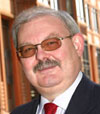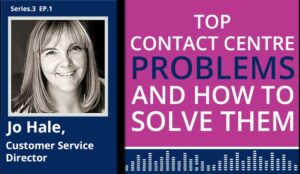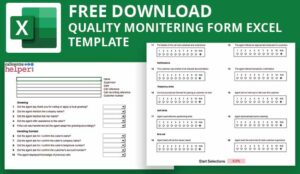Graham Chick makes the case for live on-call monitoring.
Talking to an increasing number of contact centre managers as I do, when trying to elicit from them exactly what tools and technologies they really need to improve the efficiencies of their own operations, a common frustration amongst them is ‘I know what my problems are…but I don’t know how to solve them.’
Trying to do more with less – How?
However, a growing number of contact centre operators and/or managers are telling me, in no uncertain terms, that they are struggling to accommodate, within ever-decreasing budgets, the seemingly contradictory demands of monitoring an ever-increasing number of calls – required by industry regulators (now recommended to be in excess of 10% in some market sectors), or meeting their own management’s rigorous targets – whilst also pursuing the unrelenting drive towards achieving ever-greater efficiencies and improved productivity! … So is this also an ongoing nightmare/challenge for you?
The safer option – do nothing?
These conflicting demands are resulting in an increasing, and healthy, scepticism – quite rightly so, in my opinion – towards the adoption of any new technologies that claim to be able to do this or that, or do it far better than it could be done before and at a price that everyone can afford…resulting in many contact centre budget holders deciding to remain non-believers and adopt the safer option…of doing nothing!
But the simple truth of the matter is that there are new technologies that are emerging from specialist vendors that really could add very significant value to your contact centre operation by enabling you to monitor potentially ALL of your contact centre agents ALL of the time at no greater cost than you are currently incurring when only monitoring a small fraction (2%?–5%?) of your calls! Sound too good to be true? Well, I can assure you that it is not!
Try before you buy
The trick is to undertake a “try before you buy” trial of the seemingly “too good to be true” software over an agreed period of time – normally 15-30 days – during which you can really work with the vendor’s technical support team to evaluate the options and how it will truly benefit you.
To explain
The old adage of “don’t change your processes to work with the technology – choose the technology that best suits your business requirements” remains true today and, returning to my original point that many contact centre operators are telling me “I know what my problems are…but I don’t know how to solve them”, a similar number are also telling me “I know I have a problem with my contact centre operation…but I don’t know what it is!”
So… given these two fundamentally different problems, how can the same technology be effectively deployed to solve both?
Mining call history
This is where specialisation comes in, and the established specialist call recording and speech analytics vendors have developed both sophisticated and complex technologies that can analyse to the nth degree what has been said during calls made to and from your contact centre, including reporting on emails and now progressing into the evaluation of what is being said about your organisation on social media sites such as Twitter and Facebook.
These technologies are great for what I call “historical data mining” and problem identification and are therefore ideal in solving the second problem identified above.
After the event
However, it should be appreciated that these technologies can only operate “after the event” as they are reporting on trends and common themes… which is information that a lot of contact centre operators are looking for in order to address their own business needs. Good but limited.
Real-time speech analytics
My firm belief is that the real answer to providing greater efficiency and “first call resolution” within a contact centre is to address the first question posed with another emerging specialist application – that of live, on the call, speech analytics. These new technologies are extremely focused on monitoring any number of pre-identified keywords and phrases immediately they have been said, or, perhaps more importantly, have not been said, and are able to both monitor and report live, during the call, not 10% but 100% of all calls – literally as the call is taking place.
Live on-call monitoring
These specialist new technologies are now able to deliver all-embracing, live, on-call monitoring and speech analytics, including stress analysis, that can actively monitor and “prompt” agents as the call is taking place, so that every agent using this advanced technology has the opportunity to ensure that everything that needs to be said is said, before the call actually ends, thereby negating the need for those infuriating call-backs.
We have a Free Call Monitoring Form you might want to try
Eliminating “bad” phrases
Additionally, “bad phrases” like “I want to speak to your supervisor” or “you are wasting my time”, or even any number of pre-defined competitor names or phrases can be immediately detected (and maybe flagged to a supervisor during the call?) and incorporated into comprehensive call reports prepared for each and every call and each and every agent using the technology. These reporting tools can also be linked directly into your own KPIs (key performance indicators) and used to pay agents on achieving set targets and other performance-related bonuses.
What have the agents forgotten to say?
Those contact centre managers who are taking the time to evaluate and carefully consider this new approach to quality monitoring have described this live agent-coaching capability as the equivalent of providing some, or all, of your agents with their own personal, full-time trainer and mentor… effectively coaching them all day, every day, reminding them of what key phrases they are required to say (for legal and/or compliance reasons) but may have forgotten to say at the appropriate time during the call in order to achieve the ultimate goal… the panacea of all contact centres, first-call resolution.
Technologies should also prompt the agent when they are speaking too loudly or too softly, too fast or too slow, to stop interrupting the caller, or reminding them to let the customer speak and, most importantly, detecting when either the customer/caller or the agent is becoming stressed.

Graham Chick
Clearly, every contact centre operator is constantly looking for ways to improve the efficiency and call-handling capability of what is their most expensive resource – their agents – by whatever means possible while at the same time looking to reduce their costs even further.
But before you launch into anything new, can I suggest you take the time to first evaluate what the problems are that you are looking to solve…and if the answer is “I know what my problems are….but I don’t know how to solve them” then can I suggest that you take a really close look at those solutions that can offer you live, on-the-call, quality monitoring – it really is the way forward!
Graham Chick is Chief Executive of GemaTech UK Ltd
Author: Jo Robinson
Published On: 16th May 2012 - Last modified: 28th Aug 2025
Read more about - Technology, First Contact Resolution (FCR), Graham Chick, Speech Analytics





































